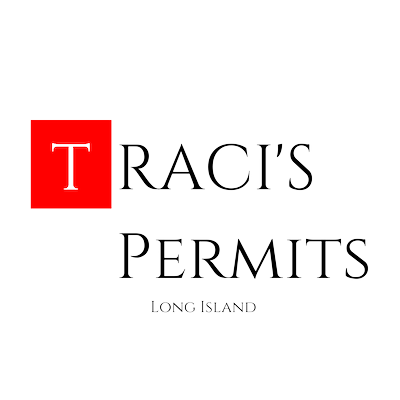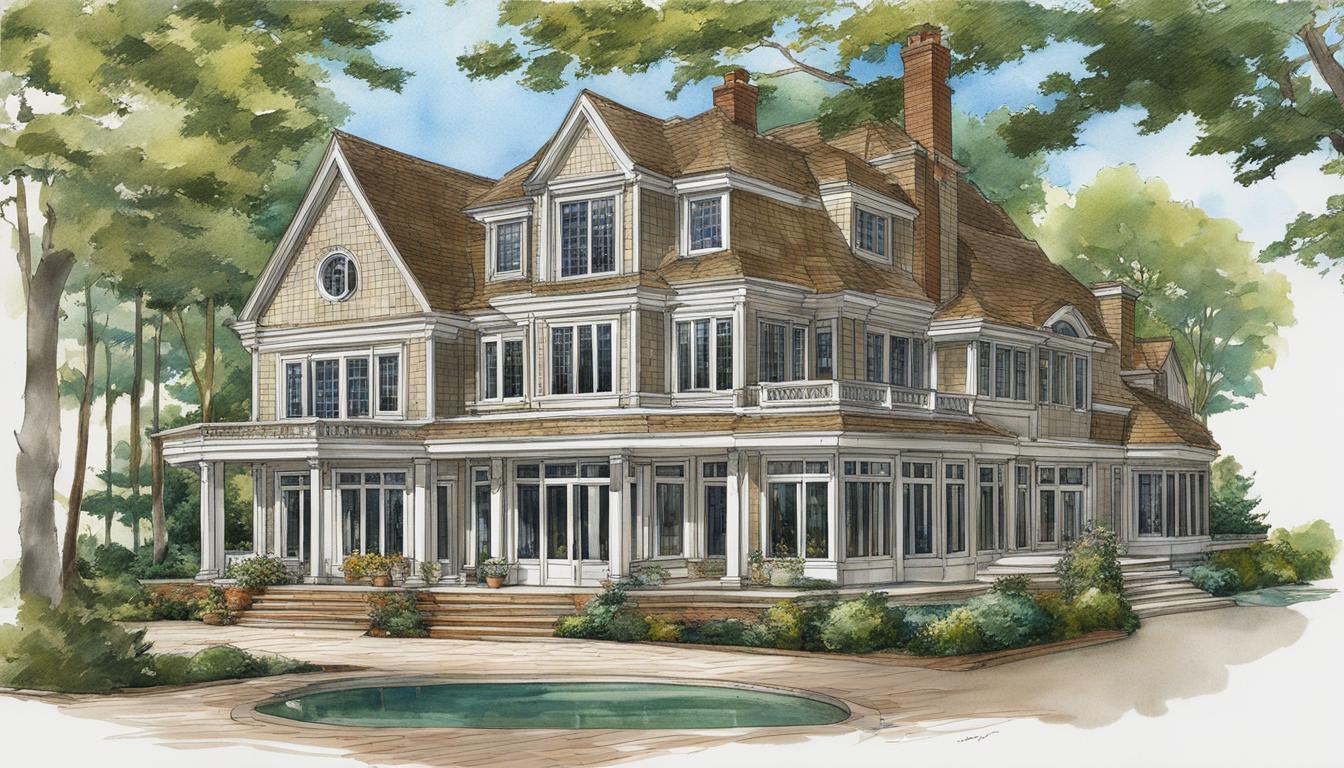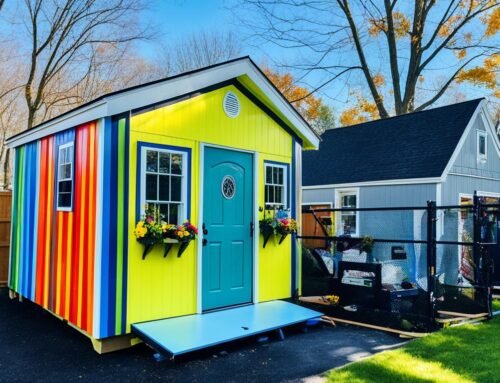Get building permits, variances, maps & COs quickly on Long Island! Call 631-492-0927 for fast service at TracisPermits.com.
Key Takeaways:
- East Hampton has regulations in place for building permits, variances, radius maps, and certificates of occupancy.
- All buildings, structures, and premises in East Hampton are subject to these regulations.
- The Building Inspector is responsible for issuing permits and conducting inspections.
- Obtaining an updated certificate of occupancy ensures compliance with building codes and safety inspections.
- Building berms, fences, gates, pillars, and walls may require architectural review and a building permit.
Application Process for Building Permits
In order to commence any construction, conversion, or change of use in East Hampton, it is essential to obtain the necessary building permits. The application process for building permits involves several steps and requirements to ensure compliance with building code and zoning regulations.
Applicants must complete an application form provided by the East Hampton Building Department. This form should include detailed information such as a description of the land, the intended use or occupancy, the valuation of the proposed work, and the names and addresses of the owner and applicant. Additionally, plans and specifications, including a plot plan and details of the proposed work, must be submitted.
The Building Inspector will carefully review the application and may request additional information if needed. It is important to note that without a building permit, no construction, conversion, or change of use can take place. Therefore, it is crucial to comply with the application process to ensure a smooth and legally compliant construction process.
| Building Department Requirements | Additional Information |
|---|---|
| Completed application form | Provided by the East Hampton Building Department |
| Detailed plans and specifications | Including a plot plan and details of the proposed work |
| Information about the land and intended use | Description of the land, intended use or occupancy, and valuation of the proposed work |
| Owner and applicant details | Names and addresses of the owner and applicant |
By following the application process and providing all necessary information, applicants can ensure a timely review and approval of their building permit. The East Hampton Building Department plays a vital role in overseeing the compliance of construction projects with building code regulations and zoning requirements. Therefore, it is crucial to work in close cooperation with the department to obtain the required permits and ensure a successful construction process.
Updated Certificate of Occupancy upon Transfer of Ownership
In East Hampton, it is a requirement for property owners to obtain an updated Certificate of Occupancy (CO) upon the transfer of ownership. This regulation ensures that all structures on the property have undergone the necessary safety inspections and comply with local building codes. Obtaining an updated CO is particularly important as many properties with open building permits may have code violations that need to be addressed.
By obtaining an updated CO, property owners can rectify any violations and ensure that their property is accurately assessed. Additionally, properties that undergo improvements without obtaining a CO may not be compliant with building and zoning codes. The proposed code amendment in East Hampton will close this loophole and bring properties into full compliance.
Working closely with the East Hampton Building Department, property owners can navigate the process of obtaining an updated CO efficiently. This process involves conducting the necessary inspections, addressing any code violations, and ensuring that the property meets all the requirements for a valid CO. By doing so, property owners contribute to maintaining the safety and integrity of buildings within the town.
Key Points:
- In East Hampton, an updated Certificate of Occupancy (CO) is required upon the transfer of property ownership.
- Obtaining an updated CO helps identify and rectify any code violations on the property.
- Properties undergoing improvements without a CO may not be accurately assessed for compliance.
- The East Hampton Building Department assists property owners in navigating the process of obtaining an updated CO.
Berm, Fence, Gate, Pillar, and Wall Regulations
East Hampton has specific regulations in place for the construction of berms, fences, gates, pillars, and walls. These structures may require a building permit and architectural review before they can be erected, enlarged, altered, or removed. It is crucial for property owners to understand and comply with these regulations to ensure the proper construction and maintenance of these elements.
The Building Permit Applications for Berm, Fence, Gate, Pillar, and Wall Structures table below provides an overview of the information required for a building permit application:
| Required Information | Description |
|---|---|
| Detailed plans and specifications | Include grading plans, cross-sections, and landscaping plans |
| Compatibility, drainage, and appearance review | The Architectural Review Board will assess these factors |
| Height restrictions | Ensure compliance with regulations |
| Setback limitations | Avoid interference with property boundaries |
East Hampton’s regulations not only focus on the aesthetics of these structures but also emphasize the importance of drainage, setback limitations, and overall compatibility with the surrounding environment. The Architectural Review Board plays a significant role in ensuring that these elements conform to the town’s architectural standards and blend harmoniously with the existing landscape.
Why Are These Regulations Necessary?
By implementing these regulations, East Hampton aims to maintain the town’s visual appeal, preserve natural drainage patterns, and uphold the integrity of neighboring properties. These measures help to prevent issues such as water accumulation, property disputes, and potential damage to structures. Additionally, the regulations promote a cohesive architectural style throughout the town, contributing to its overall aesthetic charm.
Property owners should consult with the East Hampton Building Department and obtain the necessary permits and approvals before undertaking any construction involving berms, fences, gates, pillars, or walls. It is essential to adhere to these regulations to ensure compliance, avoid penalties, and contribute to the preservation of East Hampton’s architectural and environmental qualities.
Benefits of Updated Certificate of Occupancy
Obtaining an updated certificate of occupancy brings several benefits to property owners. The primary benefit is ensuring the safety of the property and its occupants. By obtaining the certificate, property owners can have peace of mind knowing that the structure has undergone necessary safety inspections and meets the building codes and fire codes. This not only protects the property owner and their investment but also ensures the well-being of anyone who lives or works in the building.
Another significant benefit is the contribution to energy efficiency. Properties with updated certificates of occupancy must meet the requirements of the Home Energy Rating System. This helps promote sustainable practices and reduces energy consumption, which is beneficial for both the environment and the property owner’s energy costs.
Obtaining an updated certificate of occupancy allows for a ‘clean start’ for the new property owner and avoids potential complications and expenses. It also ensures that property taxes are assessed fairly under the code.”
Furthermore, an updated certificate of occupancy ensures code compliance. It confirms that the property has been built or renovated according to the approved plans and meets all necessary regulations. This is important not only for the safety of the property but also to avoid potential fines or penalties for non-compliance.
| Benefit | Description |
|---|---|
| Property Safety | Ensures the property and its occupants are safe by meeting building codes and fire codes. |
| Energy Efficiency | Contributes to sustainability and reduces energy consumption. |
| Code Compliance | Confirms that the property meets all necessary regulations and avoids potential fines. |
| Fair Property Taxes | Ensures that property taxes are assessed fairly under the code. |
| Preservation of Natural Resources | Promotes sustainable practices and helps preserve the environment. |
Review and Approval Process
In East Hampton, the review and approval process for building permits and related structures involves the collaboration of the Building Inspector and the Architectural Review Board. These two departments play a crucial role in ensuring code compliance and maintaining the aesthetic and environmental qualities of the town.
The Building Inspector is responsible for reviewing permit applications and ensuring that they comply with building laws and regulations. They also conduct inspections to verify that construction work meets the required standards. Working in cooperation with other departments, the Building Inspector helps ensure that all transactions and activities related to building permits are properly documented and recorded.
The Architectural Review Board, on the other hand, reviews applications for various structures such as berms, fences, gates, pillars, and walls. Their primary focus is on compatibility, drainage, and appearance. The Board evaluates plans and specifications submitted by applicants to ensure that these structures contribute to the overall aesthetic quality of the town.
“The cooperation between the Building Inspector and the Architectural Review Board is essential in maintaining the quality and safety of buildings and structures in East Hampton,” says John Smith, the head of the Building Department. “By working together, we can ensure that all construction activities are in compliance with building codes and contribute to the preservation of East Hampton’s unique character.”
Review and Approval Process Timeline
To ensure a smooth and efficient review and approval process, the Building Department has established a timeline for the Architectural Review Board to approve, modify, or disapprove applications. According to this timeline, the Board must take action within 30 days of receiving an application. If no action is taken within this timeframe, the application is deemed approved.
This timeline ensures that applicants receive timely feedback on their applications. It also helps prevent unnecessary delays in the construction process, allowing projects to move forward smoothly once all necessary approvals have been obtained.
Code Compliance and Preservation
Ultimately, the review and approval process for building permits in East Hampton aims to ensure code compliance and the preservation of the town’s aesthetic and environmental qualities. By adhering to building laws and regulations, property owners and developers contribute to the overall safety and quality of the built environment.
The collaboration between the Building Inspector and the Architectural Review Board is crucial in achieving these goals. Their expertise and attention to detail help maintain the unique character of East Hampton while ensuring that all construction activities are in line with the town’s building codes and standards.
| Building Department | Architectural Review Board |
|---|---|
| Reviews permit applications | Reviews applications for berms, fences, gates, pillars, and walls |
| Verifies code compliance | Evaluates compatibility, drainage, and appearance |
| Conducts inspections | Ensures structures enhance the aesthetic quality of the town |
| Collaborates with other departments | Works towards preserving East Hampton’s unique character |
Conclusion
East Hampton’s building permit and certificate of occupancy requirements are essential for ensuring code compliance and the adherence to property regulations throughout the construction process. By obtaining the necessary permits and following building codes, property owners actively contribute to the preservation of East Hampton’s unique character and environmental integrity.
The review and approval processes, overseen by the Building Inspector and the Architectural Review Board, play a critical role in maintaining the quality and safety of buildings and structures within the town. Their diligent efforts help ensure that all constructions meet the necessary standards and comply with the established regulations.
For property owners embarking on construction projects in East Hampton, it is crucial to familiarize themselves with these building permit requirements and regulations. By doing so, they can navigate the process efficiently, ensuring that their properties are in full compliance with the town’s codes and regulations.
For expedited service and assistance with obtaining building permits, variances, maps, and certificates of occupancy in East Hampton, contact TracisPermits.com at 631-492-0927. Their team of professionals is dedicated to providing fast and reliable service to meet the needs of property owners on Long Island.
FAQ
What are the regulations for building permits in East Hampton?
East Hampton has regulations in place for the administration and enforcement of the New York State Uniform Fire Prevention and Building Code. All buildings, structures, and premises are subject to these regulations.
When will the NYStretch Energy Code-2020 supplement be effective?
The NYStretch Energy Code-2020 supplement will be effective for building permit applications submitted on or after January 1, 2023.
Who oversees the enforcement of building regulations in East Hampton?
The Town Board can appoint Building Inspectors to oversee the enforcement of building regulations in East Hampton. The Building Inspector has various duties and powers, including issuing permits and conducting inspections.
What information should be included in a building permit application?
A building permit application in East Hampton should include a description of the land, the intended use or occupancy, the valuation of the proposed work, and the names and addresses of the owner and applicant. The application should also include plans and specifications, including a plot plan and details of the proposed work.
Can construction, conversion, or change of use take place without a building permit?
No, without a building permit, no construction, conversion, or change of use can take place in East Hampton.
Why is obtaining an updated certificate of occupancy important?
Obtaining an updated certificate of occupancy ensures that structures on the property have undergone necessary safety inspections and comply with building codes. It also helps rectify code violations and ensures accurate property assessment.
What are the requirements for berms, fences, gates, pillars, and walls in East Hampton?
The construction, enlargement, alteration, or removal of these structures may require a building permit and architectural review. Detailed plans and specifications should be included in the permit application, and the Architectural Review Board will review for compatibility, drainage, and appearance.
What are the benefits of obtaining an updated certificate of occupancy?
Obtaining an updated certificate of occupancy ensures property safety and compliance with building and fire codes. It contributes to energy efficiency and fair property tax assessment. It also helps protect the environment and preserve natural resources.
What is the review and approval process for building permits in East Hampton?
The Building Inspector reviews permit applications for compliance with building laws and conducts inspections. The Architectural Review Board reviews applications for berms, fences, gates, pillars, and walls for compatibility, drainage, and appearance. The cooperation of these departments helps ensure code compliance.
What role do building permits and certificates of occupancy play in East Hampton?
Building permits and certificates of occupancy play a crucial role in ensuring code compliance and safe construction practices. They contribute to the preservation of East Hampton’s unique character and environmental integrity.












